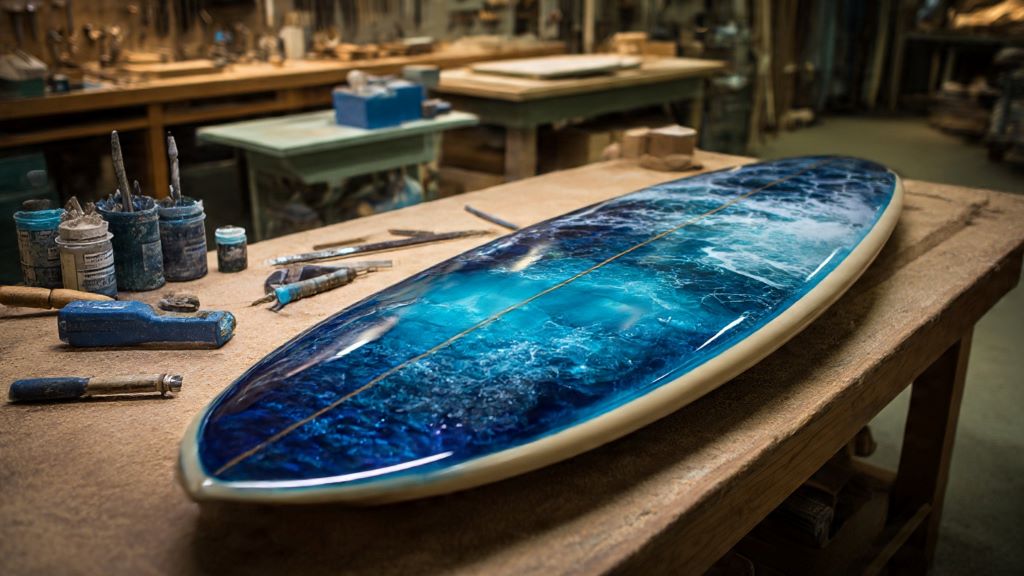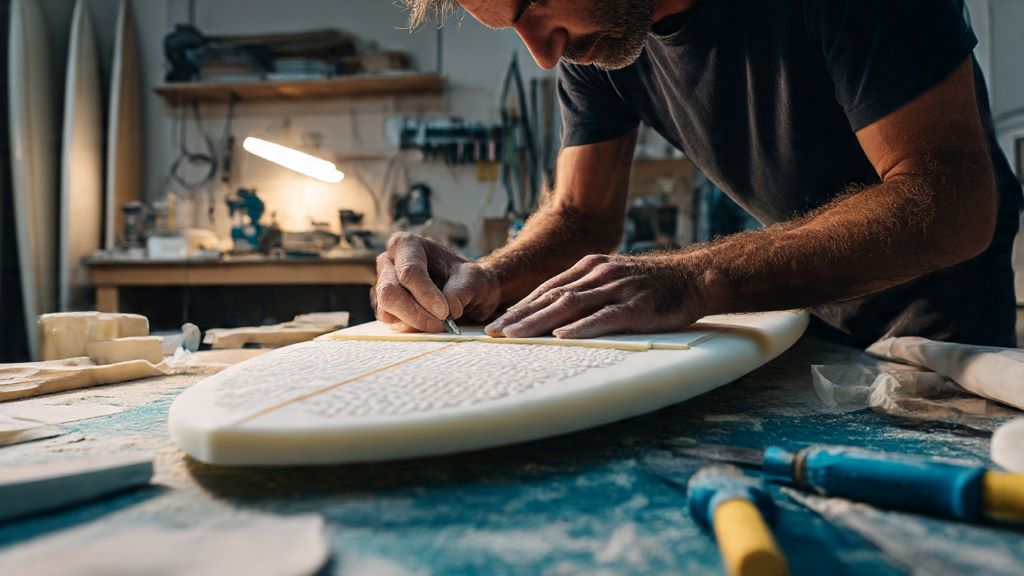Surfboard shaping is more than just a job. It is a craft that blends artistry with technical skill. Many people dream of turning their passion for surfing into a career. However, the financial reality of being a surfboard shaper varies greatly. According to The Surfing Village, understanding the business side of shaping is just as important as mastering the craft itself.
The income of a surfboard shaper depends on several factors. These include experience, location, reputation, and business model. Some shapers earn a modest living while others build thriving businesses. Additionally, the rise of custom boards and boutique surf shops has created new opportunities. Therefore, aspiring shapers should understand what influences earnings in this unique industry.
Before diving into shaping professionally, many enthusiasts start by learning the basics of board design. For instance, understanding proportions and curves helps develop an eye for quality craftsmanship. If you want to begin exploring surfboard design, you might want to learn how to draw a surfboard, which provides a foundational understanding of board anatomy. This skill helps shapers visualize their creations before cutting into foam.
Understanding the Surfboard Shaping Business
Surfboard shaping requires specialized knowledge and equipment. Shapers must understand hydrodynamics, materials, and rider preferences. They also need a workspace, tools, and materials. Starting a shaping business involves significant upfront investment.
Most shapers work independently or for established brands. Independent shapers have more creative freedom but face greater financial uncertainty. Conversely, working for a brand offers stability but less artistic control. Each path presents different earning potential.
The surfboard market has become increasingly competitive. Mass-produced boards from overseas factories offer cheaper alternatives. However, many surfers still prefer custom boards shaped specifically for their style and local waves. This demand keeps skilled shapers in business.
Average Income for Surfboard Shapers
Entry-level shapers typically earn between $25,000 and $35,000 annually. These individuals are still building their skills and reputation. They often work part-time or supplement their income with other jobs. Many shapers teach surf lessons or work in surf shops to make ends meet.
Experienced shapers with established reputations earn significantly more. Mid-level professionals typically make between $40,000 and $60,000 per year. These shapers have steady clientele and consistent orders. Their reputation allows them to charge premium prices for their work.
Top-tier shapers can earn $80,000 to $150,000 or more annually. These craftsmen work with professional surfers and have international recognition. However, reaching this level requires years of dedication and exceptional skill. Only a small percentage of shapers achieve this income level.
According to industry reports, the average surfboard shaper in the United States earns approximately $45,000 per year. This figure varies considerably based on geographic location and market demand. Shapers in prime surf destinations like California and Hawaii often command higher prices.
Factors That Influence Shaper Income
Location plays a crucial role in determining income potential. Shapers in major surf hubs have access to larger markets. Additionally, these areas attract tourists and serious surfers willing to pay premium prices. Conversely, shapers in less popular regions may struggle to find consistent work.
Reputation significantly impacts earning potential. Shapers with strong portfolios and positive reviews attract more customers. Social media presence also matters in today’s digital marketplace. Many successful shapers showcase their work on Instagram and build followings that translate into sales.
Business model affects profitability substantially. Some shapers focus on high-volume production with lower margins. Others specialize in premium custom boards with higher profit per unit. The latter approach requires less volume but demands superior craftsmanship.
Material costs and overhead expenses impact net income. Foam blanks, resin, fiberglass, and fins add up quickly. Shapers must also consider workspace rent, utilities, and equipment maintenance. Efficient operations and smart sourcing help maximize profits.
Additional Income Streams for Shapers
Many shapers diversify their income through multiple channels. Offering repair services provides steady cash flow between shaping projects. Ding repairs are always in demand and require less time than creating new boards.
Teaching shaping workshops has become increasingly popular. Surf enthusiasts pay good money to learn the craft from experienced professionals. These workshops can generate several hundred to several thousand dollars per session. Furthermore, they help build the shaper’s reputation and network.
Some shapers develop relationships with surf shops and receive wholesale orders. This arrangement provides predictable income but typically involves lower profit margins. However, consistent volume can offset the reduced per-board profit.
Sponsorships and brand partnerships offer another revenue source. Established shapers may receive support from resin manufacturers, blank suppliers, or surf brands. These partnerships can include financial compensation or discounted materials.
Online sales have opened new markets for shapers worldwide. Many craftsmen now ship boards internationally, expanding their customer base significantly. Digital marketing and e-commerce platforms make this easier than ever before.

Challenges in the Surfboard Shaping Industry
The physical demands of shaping affect long-term career sustainability. Exposure to fiberglass dust and resin fumes poses health risks. Many shapers develop respiratory issues or repetitive strain injuries over time. Proper safety equipment and workspace ventilation are essential but add to costs.
Market saturation creates intense competition in popular surf areas. New shapers constantly enter the market, making differentiation crucial. Standing out requires either exceptional skill, unique designs, or strong marketing.
Economic fluctuations impact discretionary spending on custom surfboards. During recessions, surfers often delay purchases or opt for cheaper alternatives. This unpredictability makes financial planning challenging for independent shapers.
The time investment required for each board limits earning potential. A quality custom board takes 15 to 30 hours to complete from start to finish. This time constraint caps the number of boards a shaper can produce monthly.
Building a Successful Shaping Career
Developing strong relationships with local surf communities builds a loyal customer base. Word-of-mouth referrals remain the most valuable marketing tool for shapers. Satisfied customers become advocates who recommend your work to fellow surfers.
Continuous skill development separates good shapers from great ones. Attending workshops, experimenting with new designs, and studying hydrodynamics improve craftsmanship. Innovation attracts attention and justifies premium pricing.
Smart business management makes the difference between struggling and thriving. Tracking expenses, managing inventory, and pricing appropriately ensure profitability. Many talented shapers fail because they lack business acumen, not shaping skills.
Building an online presence expands market reach dramatically. Professional photography of finished boards, customer testimonials, and behind-the-scenes content engage potential buyers. According to Payscale, shapers who effectively market themselves online typically earn 20-30% more than those relying solely on local reputation.
Creating a unique brand identity helps shapers stand out in crowded markets. Distinctive logos, consistent aesthetic choices, and memorable names make businesses more recognizable. Strong branding allows shapers to charge premium prices and attract specific customer segments.
The Future of Surfboard Shaping Income
Technology continues to reshape the surfboard industry. Computer-aided design and CNC machines have changed manufacturing processes. Some fear these technologies threaten traditional hand-shaping careers. However, many surfers still value the craftsmanship and customization of hand-shaped boards.
Growing environmental consciousness creates opportunities for eco-friendly shapers. Using sustainable materials and environmentally responsible processes appeals to conscious consumers. This niche market often supports premium pricing, benefiting forward-thinking shapers.
The global surf tourism industry continues expanding, creating new markets. Emerging surf destinations in Asia, South America, and Africa need local shapers. Adventurous craftsmen willing to relocate may find lucrative opportunities in developing markets.
Direct-to-consumer business models reduce reliance on retail shops. Online platforms allow shapers to capture full retail prices rather than wholesale rates. This shift improves profit margins significantly for tech-savvy shapers.
Conclusion
Surfboard shaping can provide a good living, but success requires more than just technical skill. The income potential varies widely based on experience, location, and business approach. Entry-level shapers often struggle financially, while established professionals can earn comfortable incomes. Top-tier craftsmen with strong reputations and business sense may earn six figures.
However, most shapers enter the profession for passion rather than profit. The lifestyle benefits, creative fulfillment, and connection to surf culture matter as much as financial compensation. Those who combine exceptional craftsmanship with smart business practices have the best chance of financial success.
Ultimately, surfboard shaping rewards dedication, innovation, and entrepreneurial thinking. Aspiring shapers should approach the career with realistic expectations about income potential. Nevertheless, for those truly committed to the craft, shaping offers a unique and rewarding career path that combines artistry with the surf lifestyle.
Frequently Asked Questions
How long does it take to become a professional surfboard shaper?
Most shapers require three to five years of consistent practice before achieving professional-level skills. However, learning never truly stops as experienced shapers continuously refine their techniques and experiment with new designs.
Do I need formal training to become a surfboard shaper?
Formal training is not required, but it significantly accelerates learning. Many successful shapers are self-taught through trial and error. However, apprenticeships or workshops provide valuable guidance and help avoid costly mistakes.
What equipment do I need to start shaping surfboards?
Basic shaping requires a shaping bay or garage space, planer, sanding blocks, templates, and proper ventilation. Initial equipment investment typically ranges from $2,000 to $5,000. As your business grows, additional tools improve efficiency and quality.
Can surfboard shaping be a side business?
Yes, many shapers start part-time while maintaining other employment. This approach reduces financial pressure while building skills and reputation. However, scaling to full-time requires significant time commitment and business development.
How much should I charge for a custom surfboard?
Custom surfboards typically range from $500 to $1,500 depending on size, materials, and reputation. New shapers should price competitively while ensuring costs are covered. As reputation grows, gradually increase prices to reflect skill level and demand.
Related Topics:
How to Choose the Right Size Skateboard: Finding Your Perfect Ride



